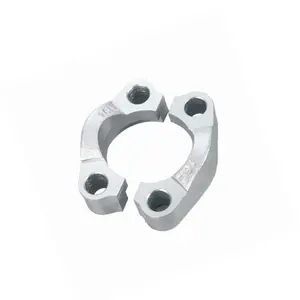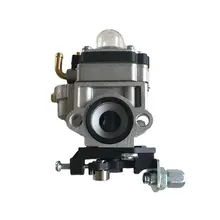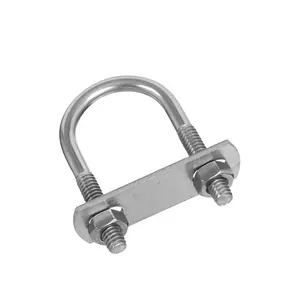A G clamp, also known as a C clamp, is a manual clamping device characterized by its G-shaped frame. This tool is designed for securing objects by clamping them between the frame's fixed jaw and the adjustable screw-mounted sliding jaw. Whether in woodworking, metalworking, or construction, G clamps play a crucial role in providing stability and precision.
Types of G clamps
There are several types of G clamps, each tailored to specific applications and requirements. The standard G clamp is a flexible option with a fixed jaw and an adjustable sliding jaw operated by a threaded screw, suitable for a wide range of general-purpose clamping tasks. For heavy-duty applications that demand extra strength and durability, heavy-duty G clamps are reinforced and designed to withstand higher levels of force and pressure. Also, there are G clamps with a "deep-throat" feature, characterized by an extended reach, allowing them to reach further into the workpiece, making them ideal for clamping objects with a significant depth.
G clamps for ducts have a robust construction, addressing the specific needs of securing ducts and pipes in HVAC and ventilation systems. Additionally, some G clamps are specialized for clamping tubes securely, often equipped with rubber or soft jaws to prevent damage to delicate tubes during clamping. The diverse range of G clamps ensures that there is a suitable option for various industries and tasks, providing stability and precision in clamping applications.
Materials and features of G clamps
G clamps are commonly constructed from robust materials such as cast iron, steel alloys, and chrome-plated steel to ensure durability and stability during clamping applications. The frame of the clamp is typically made from cast iron or steel alloy, providing a sturdy foundation. The threaded screw and sliding components may be crafted from chrome-plated steel, offering corrosion resistance and facilitating smooth operation. These materials contribute to the overall strength and reliability of the G clamp. Features often include an adjustable sliding jaw operated by the threaded screw, allowing users to secure workpieces with precision. Some G clamps are equipped with ergonomic handles for comfortable use, while others may have swivel pads or soft jaws to protect delicate surfaces during clamping.
What is the difference between a standard G clamp and a deep-throat G clamp?
The main difference between a standard G clamp and a deep-throat G clamp lies in the throat depth. The throat depth refers to the distance from the top of the fixed jaw to the threaded screw, determining how far the clamp can reach into the workpiece. In a standard G clamp, the throat depth is sufficient for many general-purpose clamping tasks.
However, a deep-throat G clamp is specifically designed with an extended reach, allowing it to reach further into the workpiece. This makes deep-throat G clamps ideal for clamping objects with a significant depth or for applications where additional clearance is needed. The choice between a standard G tube clamp and a deep-throat G clamp depends on the specific requirements of the clamping task and the depth of the materials being worked on.












































 浙公网安备 33010002000092号
浙公网安备 33010002000092号 浙B2-20120091-4
浙B2-20120091-4